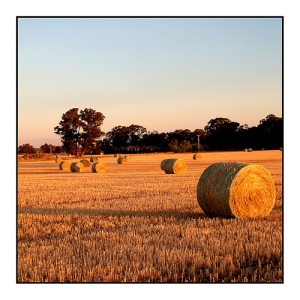A renewed sense of hope at EcoCity World Summit 2008
An example of a green building from Flickr by sillydog
Delegates from across the globe are gathering this week in San Francisco to share ideas and innovations to advance the international movement for sustainable cities.
A WorldChanging blog by Holly Pearson highlights the seventh international EcoCity World Summit, which will be hosted by Oakland-based EcoCity Builders and partner organisations.
The international community of inspired change-makers are addressing the world’s environmental problems, whilst thinking of ” truly sustainable, ecologically, healthy and socially just” solutions.
Topics of agenda include
- Ecological city design
- Green architecture, green building
- Renewable energy
- Restoration of natural ecologies
- Recycling
- Green business incentives
- Ecological footprint
Why are cities the main point of focus?
Richard Register, President of EcoCity Builders, explains that cities are, “directly connected to the state of the planet’s environment as well as to local problems and solutions, both ecological and economic.”
Mr Register went on to suggest that cities could run on a fraction of the energy and generate a fraction of the ecological impact if they were really well-designed and efficient.
The EcoCity World Summit Main Conference concludes tomorrow, with main topics of discussion being architecture, urban design, land use and government.
To register click here.
Sources:WorldChanging blog by Holly Pearson and EcoCity World Summit 2008
For further environmental news stories visit ENO – www.environmentalnewsonline.com
Earth First! blockades entrance to coal plant
On Tuesday morning, activists from Blue Ridge Earth First! established a blockade at the entrance to Dominion Power’s James River headquarters in Richmond, Virginia.
Three activists locked themselves to one another, blocking the only road in and out of the office complex for almost an hour.
The campaign was against the building of Dominion’s proposed new coal-fired power plant in Wise County, Virginia.
Supporters stood-by holding signs and banners demanding, ‘No Coal for Virginia.’
Why Chesapeake Climate Action Network believes the Wise County Coal Plant is bad for Virginia
- The plant would emit 5.4m tons of Co2 annually.
- Mountaintop removal coal mining would be exacerbated.
- 1476 jobs would be lost.
- It will will not be clean.
- The plant will not meet the Governor’s own carbon reduction goals.
- Opposition to the plant keeps growing.
- Virginia hasn’t invested in renewables or efficiency
Help deliver the mile-long petition with hundrerds of others on May 8th in Richmond.
Join CCAN in collecting 50,000 petition signatures by May 1st by clicking here.
Sources: CCAN
For further environmental news stories visit ENO – www.environmentalnewsonline.com
Money does grow on trees
Image from Flickr by heritagefutures
Farmers in North Queensland, Australia have recently bought 20,000 diesel-producing trees in an experiment to see if they can self-sustain their agricultural production.
Australian farmers are attempting to essentially become self-sustainable by relying on special diesel-producing trees called Copaifera langsdorfii.
However..
Michael d’Estries , a regular contributer to Groovy Green says: “As with anything almost too good to be true, there is one catch.
“100 trees will only produce about 25 barrels of diesel fuel annually. Additionally, that fuel will only last a couple months in terms of keep.”
That said, Australian farmers are hoping the trees will provide a consistent and cheap source of fuel for their machinery.
According to d’Estries, the trees are expected to continue producing fuel for about 10 years.
Eco-friendly
Steve N Lee commented on Warren McLaren‘s article, ‘The Diesel Tree: Grow Your Own Oil,’ on Treehugger sounding surprised but pleased by the news: “I still find this hard to believe. Not just for the fuel production, but for the fact that we don’t need to harvest the plant, i.e. kill it, to get what we want from it, but simply to encourage it’s long term growth.
“The tapping of the fuel will also be vastly more eco-friendly than traditional oil drilling.”
In about 15 years time, we should be able to see just how well the investment has paid off for Australian farmers.
Sources: Groovy Green and Treehugger
For further environmental news stories visit ENO – www.environmentalnewsonline.com
Defenders of Wildlife call for an end to unnecessary slaughter
Image from Flickr by Heartlover1717
Defenders of Wildlife has revealed that a record number of bison have been slaughtered in America.
In a press release, DoW has said over 1,100 bison have been slaughtered this winter around Yellowstone National Park in Montana.
DoW suggests that the removal of nearly one-quarter of the park’s bison population dramatically demonstrates the need to reform the rules governing the last stronghold for America’s wild bison.
America’s last free-roaming wild bison
Jamie Rappaport Clark, executive vice president of DoW said: “Yellowstone’s bison are America’s bison, the last pure descendants of the tens of millions that once thundered through the American landscape.
“Yet as soon as they set foot outside of Yellowstone Park, even onto publicly owned national forests, they are harassed and killed. This is truly one of the worst examples of wildlife management in the country.”
Montana Department of Livestock is responsible for indiscriminately slaughtering bison that venture outside of the park in winter looking for food.
Why are bison being slaughtered?
DoW claim that faulty science and biased politics have led to regular winter roundups of bison in order to be killed due to the fear they might transmit a disease called brucellosis to cattle grazing on public lands.
However, there has never been a documented case of a bison transmitting brucellosis to cattle in the wild and the vast majority of bison killed for this reason are not even tested for the disease beforehand.
What action can be taken to stop unnecessary slaughters?
You can write to the Montana Promotion Division and ask for sensible management of these endangered animals.
To do this online, click here.
For further environmental news stories visit ENO – www.environmentalnewsonline.com



